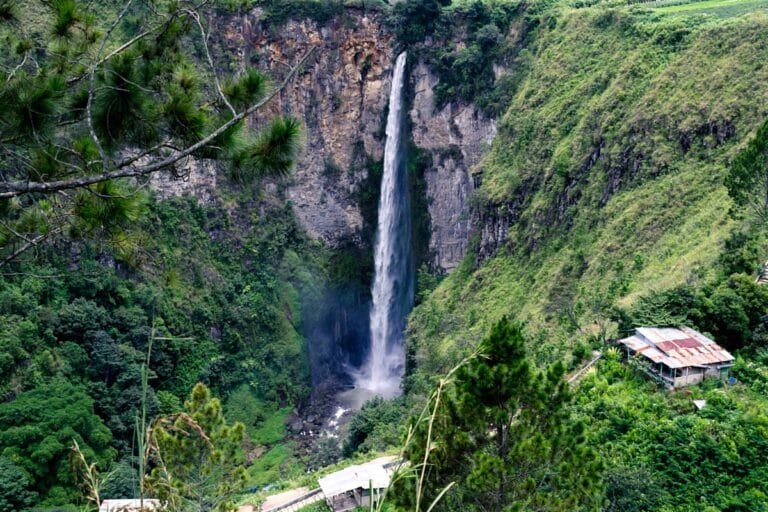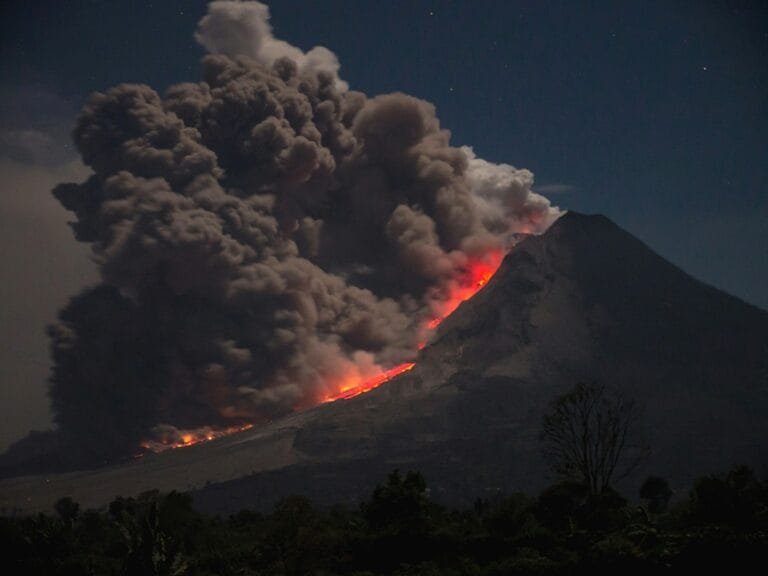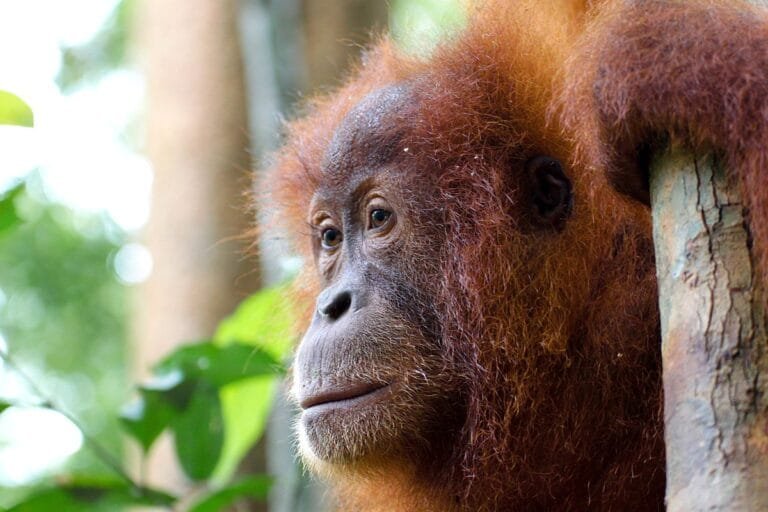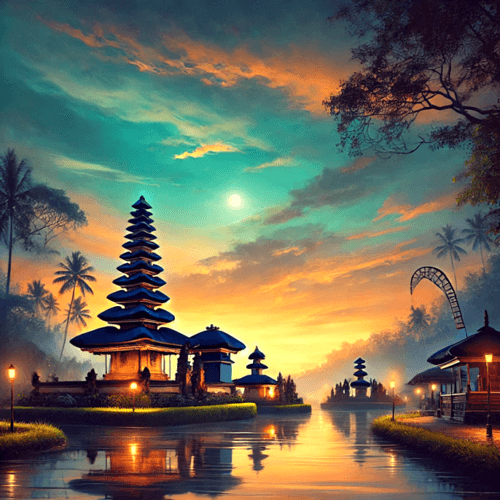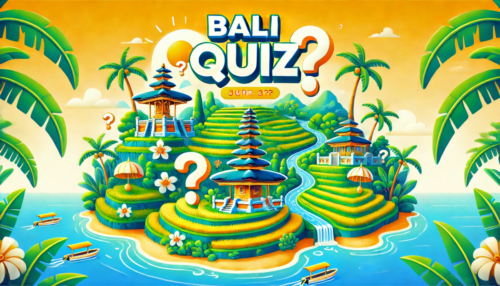Sumatra’s wild heart beats in the rhythm of rainforests, volcanoes, and ancient traditions.
An Island of Untamed Nature, Wildlife, and Culture
Sumatra, the largest island in Indonesia and the sixth-largest in the world, is a land of unparalleled natural beauty and cultural diversity. Located in western Indonesia, Sumatra is home to vast rainforests, majestic volcanoes, serene lakes, and a rich variety of wildlife, including the critically endangered Sumatran orangutans, tigers, and rhinoceroses. Despite its size and significance, Sumatra remains less visited than other Indonesian islands like Bali or Java, offering a raw, off-the-beaten-path experience for travelers seeking adventure and nature.
The island is divided into several provinces, each with its own unique landscapes and cultural traditions. From the highland coffee plantations of Aceh to the bustling city of Medan, the tranquil shores of Lake Toba, and the deep jungles of Bukit Lawang, Sumatra invites visitors to explore its untouched wilderness and rich history.
Wildlife and Rainforests: Exploring Sumatra’s Biodiversity
One of the main draws of Sumatra is its extraordinary wildlife. The island is part of the Sundaland Biodiversity Hotspot, one of the most biologically rich areas on the planet. Despite deforestation and habitat loss, Sumatra still boasts some of the world’s most diverse ecosystems, including tropical rainforests, peat swamps, and mangroves. These habitats are home to many endemic species, including the Sumatran orangutan, Sumatran tiger, Sumatran elephant, and Sumatran rhinoceros—all critically endangered.
One of the best places to encounter Sumatra’s wildlife is Bukit Lawang, located on the edge of the Gunung Leuser National Park. Bukit Lawang is famous for its orangutan rehabilitation center, where visitors can trek into the jungle to see semi-wild and wild orangutans in their natural habitat. Guided treks through the national park offer a chance to see these gentle primates, along with other wildlife such as Thomas Leaf monkeys, gibbons, hornbills, and even the elusive Sumatran tiger (though sightings of the tiger are rare).
The Gunung Leuser National Park is part of the UNESCO-listed Tropical Rainforest Heritage of Sumatra and spans over 7,900 square kilometers. The park is a paradise for trekking and birdwatching, with dense forests, rivers, waterfalls, and a range of wildlife making it a top destination for nature lovers.
TIP: Trekking in Bukit Lawang is best done with a certified guide, as the jungle is dense and can be difficult to navigate without local knowledge. Multi-day treks offer a deeper immersion into the rainforest and increase your chances of wildlife sightings.
The Mighty Volcanoes of Sumatra
Sumatra is part of the Pacific Ring of Fire, and the island is dotted with active volcanoes, making it an exciting destination for trekkers and adventurers. One of the most famous volcanoes on the island is Mount Sinabung, located in the Karo Highlands of North Sumatra. Sinabung has been active since 2010, and although the area is sometimes closed due to eruptions, the sight of the smoking volcano is a dramatic reminder of Sumatra’s volcanic power.
Another iconic volcano is Mount Kerinci, the highest peak on Sumatra and the tallest volcano in Indonesia, standing at 3,805 meters. Kerinci is located in Kerinci Seblat National Park, a UNESCO World Heritage Site. Trekking to the summit of Mount Kerinci offers breathtaking views of the surrounding tea plantations, rainforest, and, on clear days, even the Indian Ocean. The park is also home to the critically endangered Sumatran tiger and offers trekking routes for spotting wildlife and exploring dense tropical forests.
Sumatra’s volcanic landscapes are not just about adventure but also beauty. Lake Toba, the largest volcanic lake in the world, was formed by a massive supervolcanic eruption about 74,000 years ago. Located in North Sumatra, Lake Toba is a serene and scenic destination, offering a peaceful retreat surrounded by mountains. The lake’s center is dominated by Samosir Island, a cultural heartland of the Batak people, where visitors can explore traditional villages, ancient stone tombs, and traditional Batak architecture.
Cultural Experiences: The Rich Traditions of Sumatra
Sumatra is not just about nature and wildlife; it is also home to diverse cultures and ethnic groups, each with its own distinct traditions, languages, and customs. One of the most prominent ethnic groups is the Batak people of North Sumatra, known for their unique cultural practices, traditional houses with steeply pitched roofs, and vibrant ceremonies.
A visit to Samosir Island on Lake Toba offers an immersive experience in Batak culture. Visitors can explore Ambarita Village, where ancient stone chairs and tables are believed to have been used for rituals, and Tomok Village, known for its Batak kings’ tombs and traditional dances. The Batak people are also famous for their ulos textiles, handwoven fabrics used in ceremonies and celebrations, which make excellent souvenirs.
Further north, in the province of Aceh, you’ll find a distinct cultural identity shaped by the region’s Islamic heritage. Aceh, often referred to as the “Verandah of Mecca,” is known for its devout Muslim population and traditional Islamic architecture. The Baiturrahman Grand Mosque in the capital, Banda Aceh, is a striking symbol of Aceh’s cultural and religious significance. Despite the devastation of the 2004 tsunami, Aceh has rebuilt itself, and today, it offers visitors a blend of history, spirituality, and natural beauty.
TIP: While visiting Aceh, be mindful of local customs, especially in dress and behavior. It’s respectful to wear modest clothing that covers the shoulders and knees, particularly when visiting religious sites.
Adventure and Outdoor Activities
Sumatra is a paradise for outdoor enthusiasts, offering a wide range of activities from trekking and wildlife spotting to surfing and diving. The island’s western coastline, facing the Indian Ocean, is known for its surf breaks, particularly in West Sumatra. The Mentawai Islands, located off the coast of West Sumatra, are a world-class surfing destination, with consistent waves that attract surfers from all over the globe.
For those who prefer to stay on land, Sumatra offers countless opportunities for hiking, caving, and waterfall hunting. The island’s rugged terrain is perfect for exploring lesser-known trails that lead to hidden waterfalls, like Sipiso-Piso Waterfall near Lake Toba or the multi-tiered Lembah Anai Waterfall in West Sumatra.
Sumatra: A Land of Adventure, Wildlife, and Tradition
Sumatra is a destination that truly has it all: stunning landscapes, diverse wildlife, rich culture, and endless opportunities for adventure. Whether you’re trekking through the jungle in search of orangutans, hiking up active volcanoes, or relaxing by the tranquil waters of Lake Toba, Sumatra promises an unforgettable journey.
For those looking to explore Indonesia’s wild side, away from the tourist crowds, Sumatra is the perfect destination. With its untamed nature, vibrant traditions, and warm hospitality, Sumatra offers a travel experience like no other, inviting you to connect with the island’s soul and discover its hidden gems.





